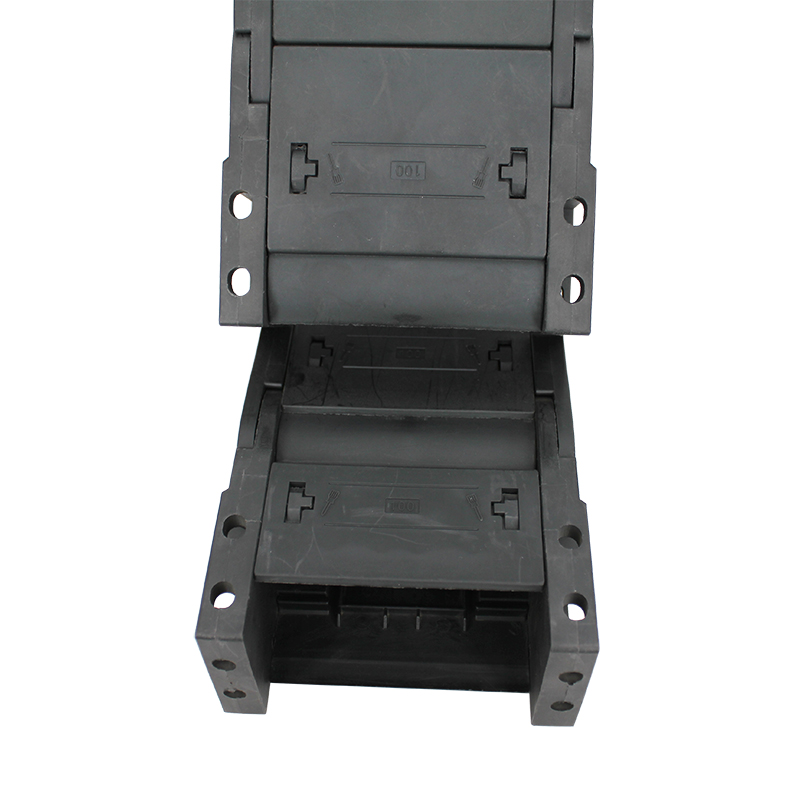Innovative Solutions for Flexible Cable Carrier Chains in Modern Engineering Applications
Flexible Cable Carrier Chains An Essential Component in Modern Machinery
In the realm of industrial automation and machinery, the efficiency and reliability of operations heavily depend on the systems that manage power and data cables. One of the most innovative solutions that have emerged to address these needs is the flexible cable carrier chain, also known as a cable chain or drag chain. These components play a crucial role in protecting and organizing cables while allowing for movement—an essential feature in dynamic environments.
What is a Flexible Cable Carrier Chain?
A flexible cable carrier chain is a modular system designed to carry and protect electrical cables, hoses, and other components as they move with machinery. Made from durable materials such as plastic or metal, these chains consist of interconnected links that flex and bend, adapting to the machinery's movements. This design is particularly beneficial in applications where cables are subjected to repetitive motion, such as robotic arms, conveyor systems, and CNC machines.
Key Features and Benefits
1. Protection of Cables One of the primary functions of a flexible cable carrier chain is to shield cables from physical damage. In repetitive motion environments, cables can be exposed to abrasion, bending, and stress. A cable carrier chain prevents such incidents, prolonging the life of the cables and reducing downtime due to maintenance.
2. Organization A well-organized cable management system enhances the overall functionality of any machinery. Flexible cable carriers neatly house multiple cables and hoses, preventing tangling and confusion. This organization not only simplifies installation and troubleshooting but also improves safety by minimizing the risk of tripping hazards.
3. Ease of Installation and Maintenance Flexible cable carriers are designed for quick installation and adjustment. Most designs are modular, allowing for easy customization based on the length and type of cables employed. Furthermore, they provide easy access to cables during maintenance, making it simpler for technicians to address issues without extensive disassembly.
flexible cable carrier chain

4. Enhanced Mobility The flexibility of these carriers enables them to conform to diverse movement patterns. Whether the motion is linear, rotary, or a combination of both, these chains can accommodate the dynamics of the equipment, ensuring seamless operation. This flexibility is vital in modern automated systems that require high agility.
Applications Across Industries
Flexible cable carrier chains are utilized across a myriad of industries, showcasing their versatility. In manufacturing, they are commonly found in assembly lines where robotics play a crucial role. In the automotive industry, they manage the myriad of connections in robotic welding and painting applications. Similarly, in the aerospace sector, cable carriers are essential for handling wiring and hoses in moving assemblies.
Moreover, the entertainment industry has adopted cable carrier chains to organize and protect cables for stage lighting and audio systems, ensuring smooth performances without disruptive hazards. Medical devices, which often require precision movement, also employ these chains to maintain equipment integrity and functionality.
Future Trends
As technology advances, the demand for flexible cable carrier chains is expected to grow. Innovations are being crafted to enhance their durability and functionality, such as the development of intelligent drag chains equipped with sensors to monitor wear and detect issues before they lead to failures. Additionally, lightweight materials and more compact designs are being explored to further improve application efficiency, particularly in space-constrained environments.
In conclusion, the flexible cable carrier chain is more than just a component; it is a vital part of modern machinery that enhances operation efficiency, cable management, and system longevity. As industries continue to evolve toward automation and sophisticated manufacturing processes, the role of these cable management systems will undoubtedly expand, driving innovation and productivity across sectors.








